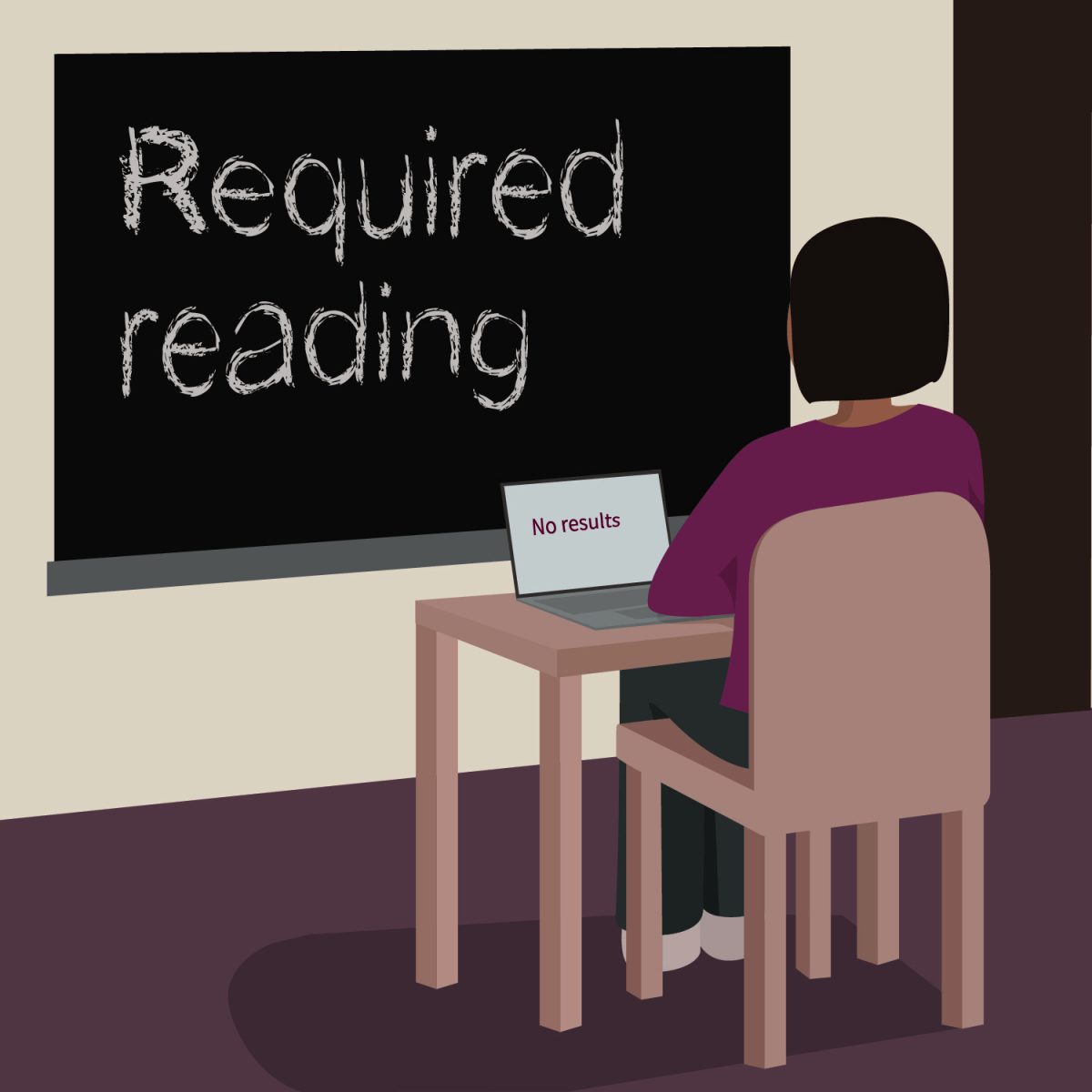In fall 2023, Texas State launched the Booksmart program hoping to provide students “quick and easy access” to their course materials each semester. The idea was to assist students with getting their books at a faster and cheaper rate. Unfortunately, it is doing the opposite.
Students are becoming increasingly frustrated with the program, as they are four weeks into classes and still not receiving their books and access codes for digital books.
According to Texas State Auxiliary Services, the primary purpose of the Booksmart program is to allow students to save money by offering a set price of $261 a semester for books provided online and through the university bookstore. Although Booksmart is a progressive idea, the program should be changed to be more efficient and offer better benefits to students.
Parker Lowe, a psychology senior, said he has had to purchase books from outside sources because of the delays this semester.
“Booksmart started my sophomore year at Texas State,” Lowe said. “There have definitely been delays [in previous semesters], but it has never been anything major until now.”
Going into the fourth week of classes, Lowe said he still does not have the access code for a digital book required to pass one of his courses.
Most students who buy from outside sources are typically only waiting on one more book and do not want to opt out of the program. So, they pay $261 per semester for Booksmart plus whatever books they have to buy from another source.
“A lot of people don’t like Booksmart because they feel like they are being scammed into it,” Lowe said. “I don’t know how you could feel good about Booksmart the way it is right now.”
According to Education Data Initiative, students typically spend anywhere from $339 to $600 on textbooks each semester. This means students who pay for Booksmart only save around $78 if they were to spend the lowest average amount from an outside source each semester.
Most college students would agree to saving any money possible. However, some may argue the stress of Booksmart is not worth it.
Professors are able to request hard copies of books, but if they don’t or there are not enough physical copies of books, digital is the default. Students do not have a choice in this, making it harder to read course materials for some.
According to Science News Explores, reading comprehension online is significantly lower than physical books. Online reading also leads to dry, sore and irritated eyes. While some students prefer reading on a tablet or laptop, Booksmart does not give students the option to choose what works best for them.
Despite the negative feedback the program has received this semester, members at the Faculty Senate Meeting believe Booksmart is on the way to becoming a better option for students.
According to research provided by the faculty senate, Booksmart has saved Texas State students a total of $10.3 million through the program.
“My sense is that we’ll get better,” President Kelly Damphousse said. “I got to tell you, this number right here, $10.3 million, that’s a no brainer for me to keep doing this. The system will get better; we will get better.”
Although the program looks good on paper, other faculty members stated their concerns about its lack of reliability.
Steve Wilson, an English professor at Texas State, said faculty members are experiencing a lack of communication within the program.
“The problems I have been informed of have nothing to do with changes,” Wilson said. “[The problems] are faculty trying to find out about whether their texts are in and available.”
Because students are automatically enrolled in the program, they must opt out if they do not want to pay for it through tuition. Along with this, some courses do not require a textbook, but students still pay the set price for Booksmart. Unless students know how to opt out, they automatically have to pay for the program. It is possible that some students are not aware that they pay for it.
As a solution to some of the issues, Booksmart should be offered as an opt-in resolution for students and prices should vary for each student depending on the books that are needed.
-Emma Hall is a journalism junior
The University Star welcomes Letters to the Editor from its readers. All submissions are reviewed and considered by the Editor in Chief and Opinions Editor for publication. Not all letters are guaranteed for publication.


















Shannon Duffy • Sep 19, 2024 at 9:21 am
There are several problems with the BookSmart program as it is currently implemented. You say that professors have the option of ordering physical books–that is incorrect, at least in my experience. My publisher’s rep, Norton, informed me that they told BookSmart they were willing to provide both digital and physical options, but BookSmart insisted on digital whenever it’s available, regardless of the professor’s preference. The savings number constantly bandied about also ignores that students in “zero-cost” or OER classes (as many Liberal Arts classes are) were not calculated into this amount, as they weren’t getting books from the bookstore–I don’t know that anyone has determined what percentage of classes accepted the OER challenge in the last decade the administration was encouraging it, but in my department at least, it’s most of the upper-class undergrad classes, and many surveys. Finally, grading assistants (IAs) in the large classes do not have access to the materials under BookSmart, making it more difficult for them to aid their undergraduate sections. -Shannon Duffy, History Faculty